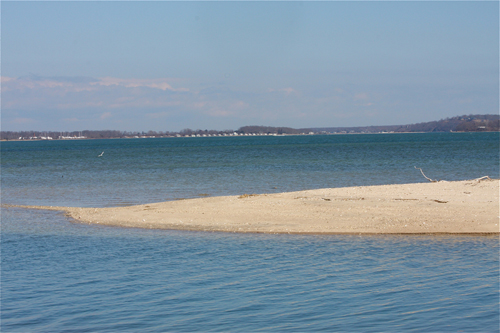Suffolk Closeup: New action on Island’s water

Legislation seeking to save Long Island’s threatened waters was introduced last week.
And not a moment too soon, with Shelter Island, along with many other Suffolk communities, becoming suddenly serious about aging or inept septic systems.
Called “the Long Island Water Quality Control Act,” and put forward by State Assemblyman Robert Sweeney of Lindenhurst, the bill is comprehensive. Plus, even more importantly, it has teeth. For example, the law would require that “all construction and substantial reconstruction” of buildings after 2017, in what would be county-designated “priority nitrogen reduction areas … shall utilize denitrification systems.”
Goodbye, conventional cesspools. This endorsement of denitrification systems , which come in two sizes, for homes and for communities, is a break from those who question alternatives to massive, extremely expensive sewers to deal with waste. Also, there would be “recommended fertilizer and pesticide application rates” for farmers. And priority would be given “to limiting nutrients, particularly nitrogen,” which is considered the cause of brown and red tides in our bays.
Assemblyman Sweeney discussed the measure at a conference last week in Islandia of the Long Island Clean Water Partnership, an initiative created by the Long Island Pine Barrens Society, Citizens Campaign for the Environment, Group for the East End and The Nature Conservancy. He emphasized to the 125 people present that there are a “multitude of jurisdictions” on Long Island with “interest or authority” related to water, but “we only have one underground system,” the aquifer that Long Islanders depend on for potable water. The bill gives the state Department of Environmental Conservation new powers for safeguarding our waters. Also, a board with local representatives would be established with oversight on how much water is pumped from the aquifer.
Not included in the bill is a provision demanded by the Long Island Builders Institute for “development and construction of 50,000 additional housing units.” This demand led to a strong attack on LIBI by Richard Amper, executive director of the Long Island Pine Barrens Society and a main fi gure in the Clean Water Partnership.
“When I first heard this, I couldn’t believe it,” Mr. Amper said. “Long Island is grossly overdeveloped as it is, sending taxes for government services through the ceiling … and contaminating our groundwater.” The “greedy developers” were insisting that “we’ll oppose Long Islanders’ efforts to clean up their water unless we include in the clean water bill authority for developers to continue to contaminate the water that over-development has already compromised,” Mr. Amper added. The “50,000 additional housing units” would be built “whether local government, which is supposed to make land use decisions, approves or not … That’s not just the most outrageous, anti-Long Island demand I’ve ever heard, it’s downright despicable.”
The legislation explains the situation we’re in when it comes to water. “Long Island’s water resources are unique in the region, unusual in the nation,” it begins. There are, indeed, few other areas of signifi cant population in the U.S. dependent on a “sole source” aquifer for water. Moreover, with such a supply, what goes on the ground migrates down to the water supply. Further, Long Island is embraced by a vast collection of bays and other estuaries, vulnerable to pollution from the land.
A good number are now listed as “impaired.”
The island has been “designated as a federal sole source aquifer” area and “special groundwater protection areas have been established,” the bill goes on, but “in spite of these designations and other planning efforts, Long Island’s water resources have continued to be impacted by increasing quantities of nutrients, pathogens, pesticides, volatile organic contaminants and saltwater intrusion.”
“In response to these environmental impacts,” it states, the island “has already experienced an increasing number of harmful algal blooms and other documented declines in key biological indicators, which demonstrate an increasing stress on the region’s groundwater resources and coastal ecosystems.”
“Continued water quality and coastal habitat decline will result in more harmful algal blooms, shell fi shing closures, beach closures and fi shing restrictions, along with the further contamination of private and public wells. These impacts will inevitably have signifi cant negative impacts on the tourism economy of Long Island — and on the quality of life and public health for the millions of residents of the region.”
State Senator Kenneth LaValle of Port Jefferson, whose district includes Shelter Island, South-old, Riverhead and a large part of Brookhaven Town, intends to introduce a companion bill in the Senate. Mr. Sweeney said passage of the Long Island Water Quality Control Act is “doable by the end of the legislation session this month.”
 Karl Grossman’s syndicated “Suffolk Closeup” column is printed in the Shelter Island Reporter, a Times/Review Newsgroup publication.
Karl Grossman’s syndicated “Suffolk Closeup” column is printed in the Shelter Island Reporter, a Times/Review Newsgroup publication.








